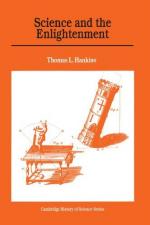|
This section contains 868 words (approx. 3 pages at 400 words per page) |

|
Mechanical vs. Vital Explanations
One of the key disputes during the enlightenment was between mechanical and vital explanations of natural phenomena, especially motion. The proponents of the mechanical view included Descartes and Newton, while the vitalists were led by Leibniz. Mechanists held that the physical world was purely a world of matter and that God's direct intervention was necessary for motion to occur. That is, force was explained in some sense by the intervention of God. Descartes, a famous proponent of the mechanical view held that mind and body or soul and matter were two, completely distinct types of things and that only the human soul had the motive force that is characteristic of mind or soul; whereas, the rest of the universe was composed of matter without the animating force of soul. To explain the motion of inanimate matter, Descartes and others argued that an animating force from...
|
This section contains 868 words (approx. 3 pages at 400 words per page) |

|




